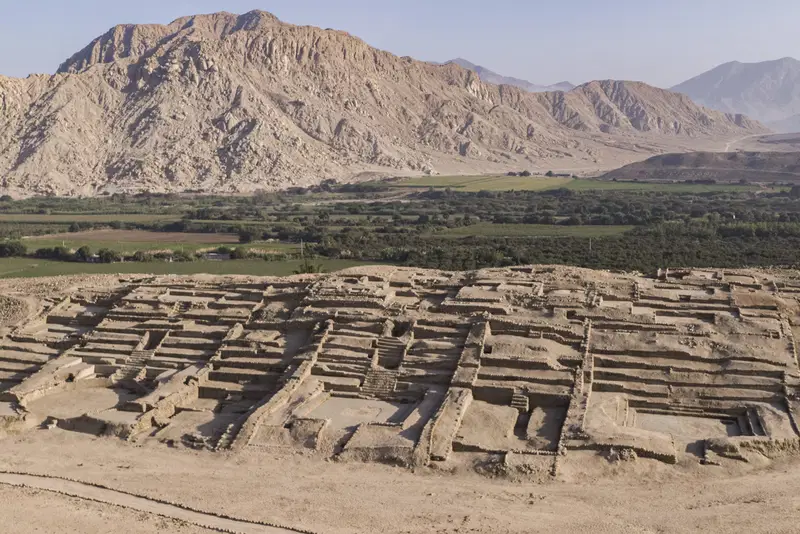World News
Peru unveils 3,800-Year-Old citadel of caral civilization after restoration

To the sound of ancient conch shell trumpets, a 3,800-year-old citadel built by the Caral civilization, one of the oldest known civilizations in the world, has officially opened to visitors in Peru.
This follows eight years of intensive archaeological research and restoration work.
The site, called Penico, served as a trade hub linking the earliest human settlements along the Pacific coast with communities from the Andes and the Amazon regions. Located in the Supe Valley, about 180 kilometers north of Lima and 20 kilometers from the Pacific Ocean, Penico had been an unassuming hilly terrain until researchers began extensive exploration in 2017.
Experts believe the ancient site could offer valuable clues about the eventual decline of the Caral civilization, which thrived between 3,000 and 1,800 BC. At the inauguration ceremony, local performers sounded traditional pututus — shell trumpets — and carried out a symbolic offering to Pachamama (Mother Earth) that included crops, coca leaves, and native drinks.
According to Ruth Shady, the lead archaeologist in charge of the project, Penico was an “organized urban settlement dedicated to agriculture and trade with people from the mountains, coast, and forests.” She noted that the citadel was constructed on a high terrace 600 meters above sea level, carefully positioned parallel to a river to avoid flooding.
The Peruvian Ministry of Culture has so far identified 18 structures within the complex, including residential areas and ceremonial buildings. Experts say the site was built around the same time as the earliest civilizations in the Middle East and Asia.
Shady emphasized that their ongoing research hopes to uncover evidence about the environmental crisis believed to have contributed to the fall of the Caral people. She explained that climate change, particularly prolonged droughts, devastated farming and led to the civilization’s decline.
“Our aim is to learn how the Caral civilization formed, flourished, and eventually faced a crisis due to climatic shifts,” she added.
-

 National News2 days ago
National News2 days agoTinubu to present 2026 budget to National Assembly Friday
-

 News2 days ago
News2 days agoCourt bars Police from enforcing tinted glass permit policy nationwide
-

 News2 days ago
News2 days agoNigeria’s elite dividing the Country over political ambitions — Makinde
-

 National News21 hours ago
National News21 hours agoReps approve increase in campaign spending limits ahead of 2027 elections
-

 News2 days ago
News2 days agoBREAKING: Court rules in favour of Ngige on bail application
-

 News2 days ago
News2 days agoBREAKING; Court rejects Malami’s bail application, upholds EFCC detention
-

 News1 day ago
News1 day agoKwara Lawmaker suspended for recording closed-door Assembly session
-

 News21 hours ago
News21 hours agoPDP asks FG to delay implementation of tax laws by six months



















